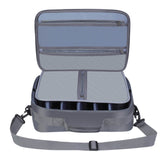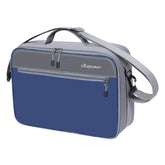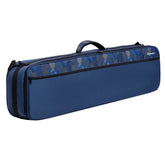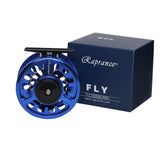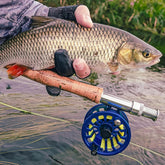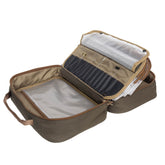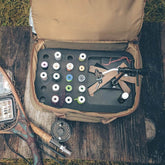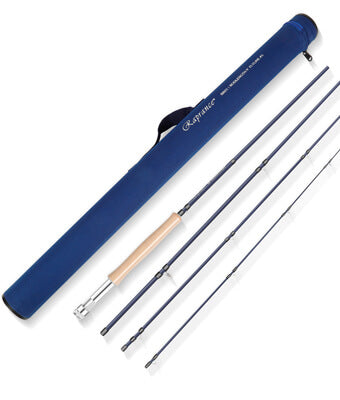Fishing Flies: Essential Kits, Homemade Options, and Tying Materials
As an avid angler, I know the significance of choosing the right flies for a successful day on the water. A well-stocked fishing flies box can make the difference between a fruitful outing and an empty net. Having access to a reliable fishing flies kit not only simplifies my fishing experience but also enhances my chances of attracting various species.

I've often found myself experimenting with homemade fishing flies. Crafting my own allows for customization tailored to specific fishing locations, ensuring that I'm prepared for any situation. Knowing the essential fly tying materials and how to use them effectively enriches both my skills and my enjoyment of the sport.
A visit to a local fly shop can be invaluable for discovering new patterns or materials that I may not have considered. Engaging with experienced staff can lead to insights that elevate my fishing game, and I always leave with a few new flies or materials to try out.
Fishing Flies Overview
Fishing flies are essential tools that mimic aquatic insects or other organisms to attract fish. My exploration of their history, types, and selection methods reveals important insights for successful fishing.
History and Significance of Flies
The art of fly fishing dates back to ancient times, with the first documented use of flies found in Roman texts. Feathers and fur were often utilized to create these lures, and the practice evolved significantly through the centuries.
By the 19th century, specialized fly patterns were developed, making the sport more sophisticated. Different regions have their traditions and techniques, underscoring the global significance of fly fishing.
The modern angler appreciates tailored flies, which enhance both the enjoyment and effectiveness of the fishing experience. This rich history informs my approach to selecting and tying flies.
Common Types of Fishing Flies
Fishing flies can be categorized into three main types: dry flies, wet flies, and streamers.
-
Dry Flies: These float on the water's surface, imitating insects like mayflies or caddisflies.
-
Wet Flies: These sink below the surface and mimic larvae or nymphs. They are useful for targeting fish that feed underwater.
-
Streamers: These imitate larger prey, such as minnows or leeches, and are typically used in faster currents.
Each type serves a specific purpose based on the fishing location and target species. My choice of flies often depends on the conditions and what fish are actively feeding.
Selecting Flies for Different Fishing Locations
When selecting flies, I consider factors like water type, temperature, and the fish species present.
-
Rivers and Streams: Fast-moving waters may require streamers or wet flies that can attract fish hiding behind rocks.
-
Lakes: Calm waters might necessitate dry flies to entice surface feeders.
-
Saltwater: In ocean fishing, larger streamers are effective to mimic the local baitfish.
Understanding the environment helps me choose appropriate flies that increase my chances of success. I often carry a selection tailored to various conditions, ensuring I'm prepared for any scenario.
Fly Tying Essentials
In fly tying, having the right materials and tools is crucial for creating effective flies. Knowing the essential items will enhance my skills and ensure that my flies perform well on the water.
Basic Fly Tying Materials and Tools
To start, I need basic materials and tools. Key items include:
- Hooks: These come in various sizes and styles. I prefer to pick hooks based on the target fish species.
- Thread: I use strong, lightweight thread, typically in the range of 6/0 to 8/0. Color choice can mimic natural food sources.
- Dubbing: This material adds bulk and texture to the fly. I often use synthetic or natural fibers for body material.
Essential tools include a vice to hold the hook securely, scissors for trimming materials, and hackle pliers to manage feathers. A whip finisher helps in securing the thread, while head cement or glue is vital for durability.
Advanced Fly Tying Components
Once I have the basics down, I can explore advanced components.
- Hackle: Feathers provide the fly with movement. I choose from various birds like capes or saddles.
- Chenille: This adds texture and bulk. It's great for building the body of nymphs and streamers.
- Beads and Eyes: These help with weight and visibility. I opt for tungsten or glass beads depending on the fly type.
Experimenting with materials like flash and tinsel can enhance the visual appeal of the fly. Using fur and hair adds more realism and attraction, making my flies more effective in the water.
Step-by-Step Guide to Tying Your First Fly
To tie my first fly, I follow these steps:
- Prepare the Hook: Secure the hook in the vice.
- Attach Thread: Start wrapping the thread at the hook's eye and work down to the bend.
- Add Dubbing: Apply a small amount of dubbing to the thread and twist to create a tapered body.
- Attach Hackle: Strip the bottom of a hackle feather and tie it in at the rear. Wind it forward to create a collar.
- Finish Off: Use the whip finisher to secure the thread and apply head cement for durability.
This process allows for creativity and personalization, ensuring each fly is unique.
Assembling a Fishing Flies Kit
Creating a fishing flies kit involves selecting essential materials, customizing the kit for specific fishing trips, and ensuring proper maintenance and storage. This process enhances my angling experience and improves my chances of a successful catch.
Essentials for a Starter Fishing Flies Kit
To build a foundational fishing flies kit, I recommend including the following items:
- Hooks: Varying sizes and styles (e.g., dry, wet, nymph) are crucial. I prefer a range like sizes 10 to 16.
- Thread: I use fine, strong thread in various colors that match the flies I intend to tie. This is vital for durability.
- Foam and Feathers: These materials help create effective patterns. Foam is particularly useful for floating flies.
- Beads and Eyes: Adding weight to certain flies can mimic natural bait and improve sinking speed.
Having these essentials readily available allows for quick fly assembly.
Tailoring the Kit to Specific Fishing Trips
Customize my flies kit based on the water conditions and target species. For rivers, I focus on patterns that mimic local insects. For example, I include:
- Nymph Patterns: Suitable for catching trout in moving water. My favorites are Hare’s Ear and Pheasant Tail.
- Dry Flies: Such as Adams or Elk Hair Caddis, are critical for surface fishing.
- Streamers: For larger species, patterns like Woolly Bugger are effective.
I also consider the season. Warmer months often call for lighter, more vibrant colors, while winter might require darker and more subdued flies.
Maintenance and Storage of Fishing Flies
Proper maintenance and storage of flies extend their life. I keep my flies in a dedicated tackle box with compartments to avoid crowding and snagging.
Storage tips include:
- Drying Flies: After each fishing trip, I ensure flies are completely dry to prevent mold.
- Organizing by Type: Grouping flies by type helps me find what I need quickly during a trip.
- Inspecting Materials: Regularly checking for damaged hooks or lost materials keeps my kit functional.
Following these practices ensures my fishing flies remain effective and ready for use.
Purchasing and Sourcing Materials

Finding the right materials for fishing flies is essential for effective fly tying. I’ve explored various sources to discover the best options for purchasing pre-made flies and sourcing quality fly tying materials.
Buying Pre-Made Fishing Flies
Purchasing pre-made fishing flies can save time and ensure a level of quality that may be hard to achieve at home. I often look for flies that suit my fishing style, whether dry flies, nymphs, or streamers.
Reputable vendors like fly shops often carry selections tailored to local water bodies. Price points can vary widely, usually ranging from $1 to $5 per fly, depending on complexity and materials used.
For budget-constrained options, I sometimes explore platforms like AliExpress, which offers affordable bulk quantities. Just be cautious regarding quality assurance and ensure reviews reflect the performance of those flies.
Sourcing Fly Tying Materials Online
For DIY enthusiasts, sourcing fly tying materials online is an efficient way to gather what I need. Websites often provide a wide range of materials, from feathers and fur to hooks, beads, and foam.
I typically choose suppliers that specialize in fly tying. They usually offer better quality materials and have knowledgeable customer service to assist with specific queries.
A rough price guide for common materials includes:
- Feathers: $5-$20 per pack.
- Fur: $7-$15 for quality pelt strips.
- Hooks: $10-$20 for a pack of various sizes.
- Beads: $5-$10 for a multipack.
Supporting Local Fly Shops
Supporting local fly shops has significant benefits. I find that these shops provide personalized service and community knowledge that online retailers often lack.
Local shops frequently stock high-quality materials, including unique feathers and local patterns, that may not be available elsewhere. I also appreciate the opportunity to form relationships with shop owners and fellow anglers.
While prices may be higher than online options, I value the expertise and support local shops offer. In addition, many local stores provide classes that can enhance my fly-tying skills. Investing in local businesses contributes to the fishing community and helps keep these resources accessible for everyone.

